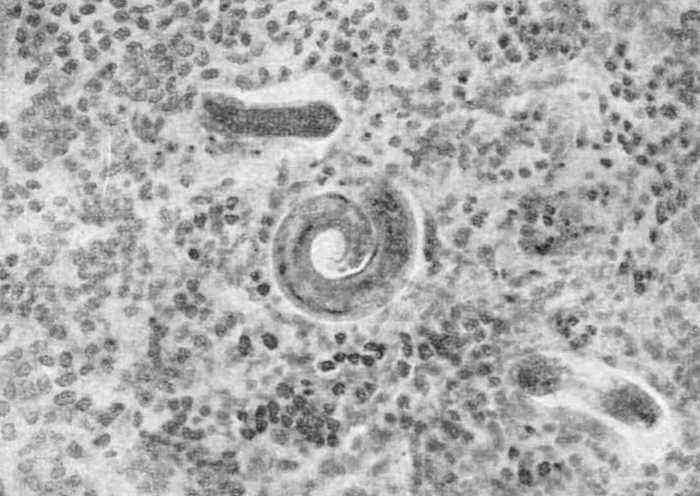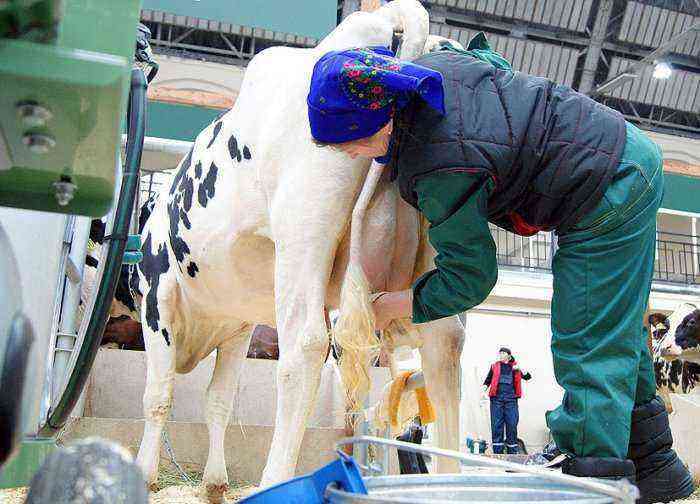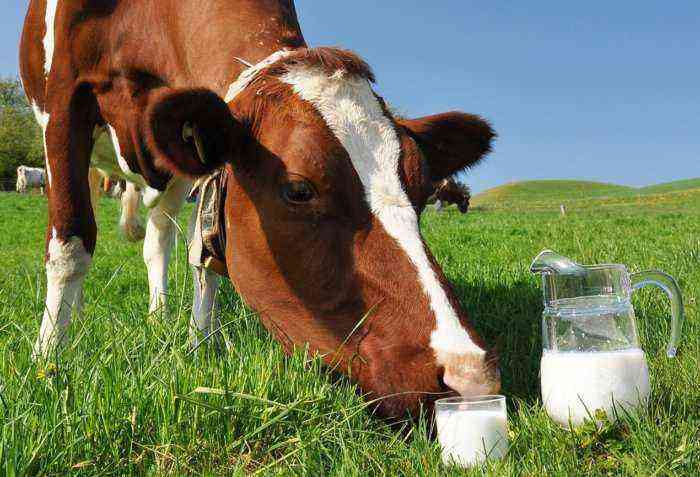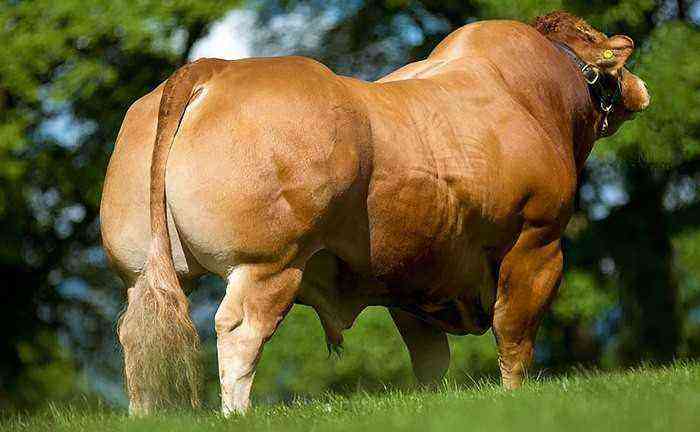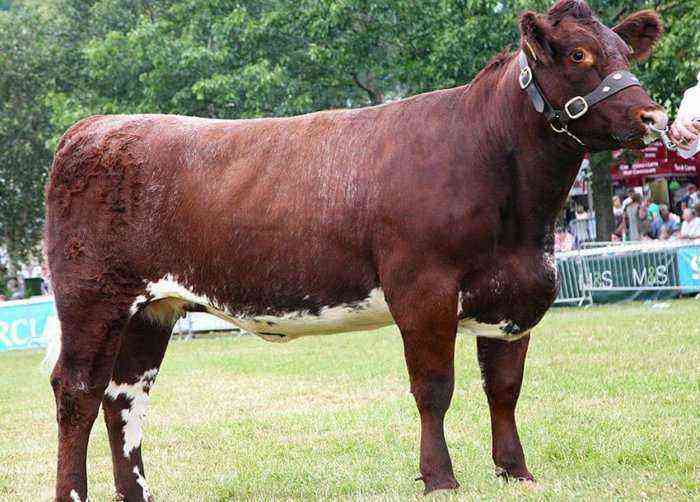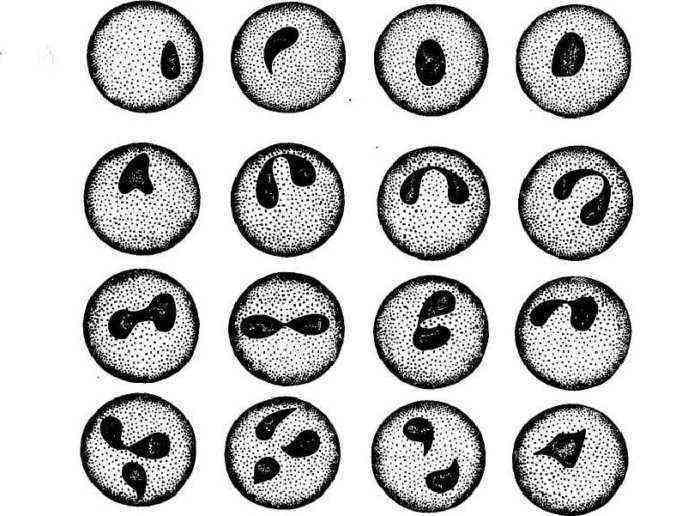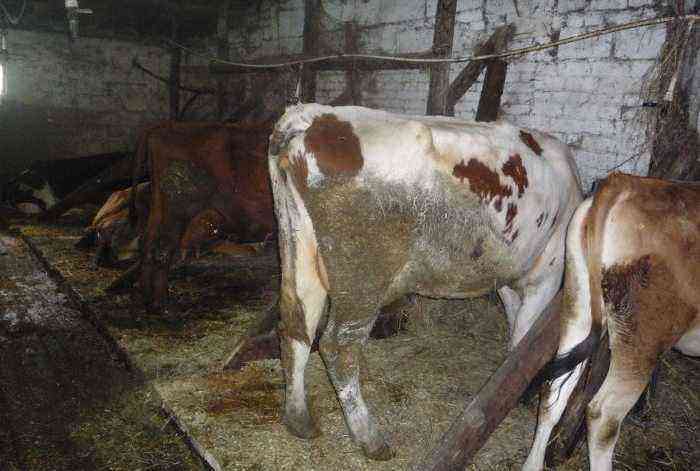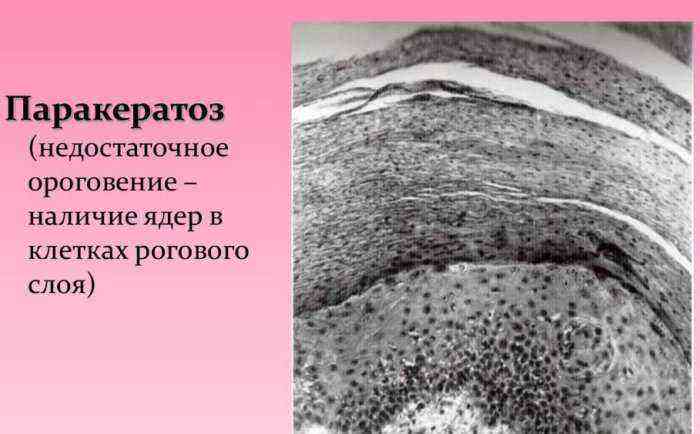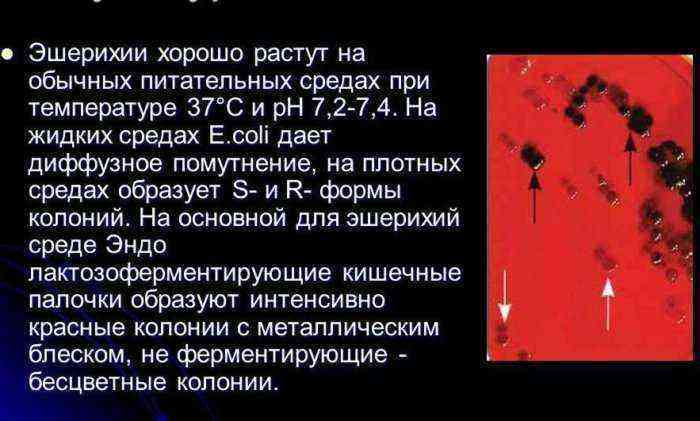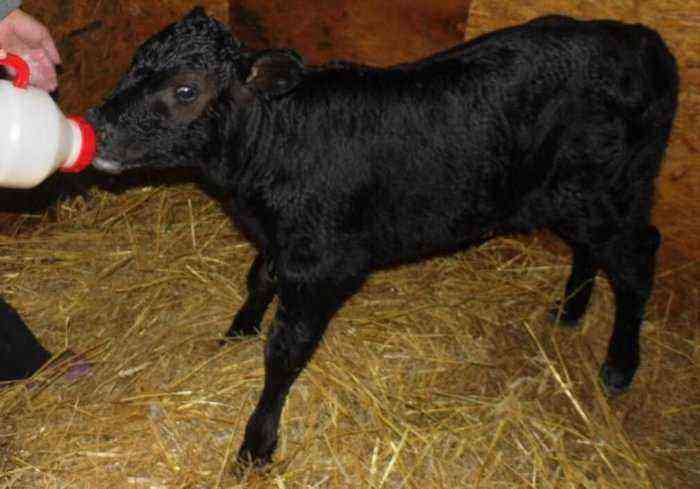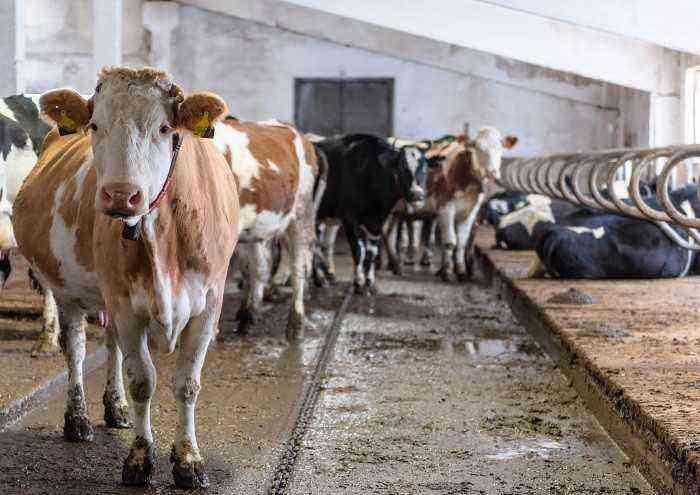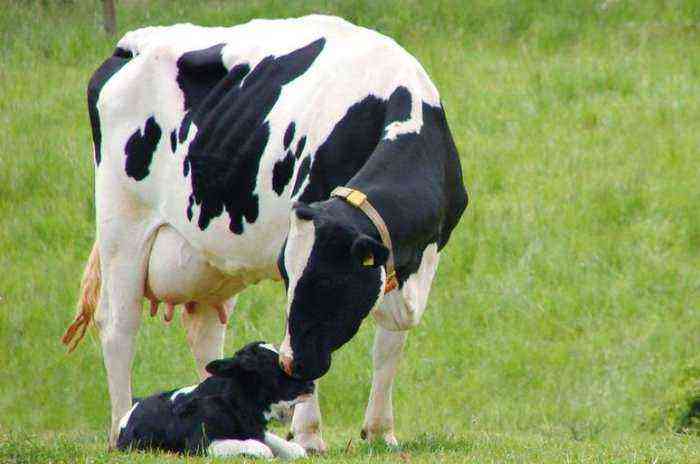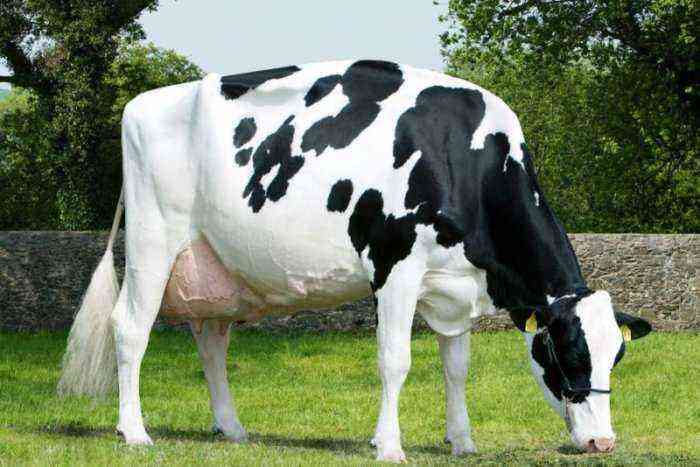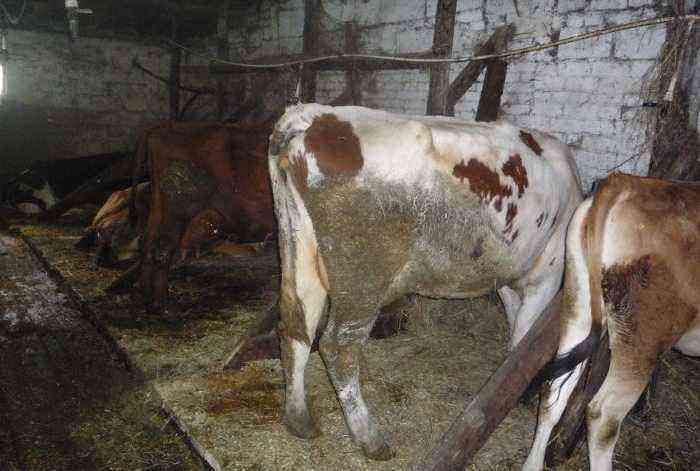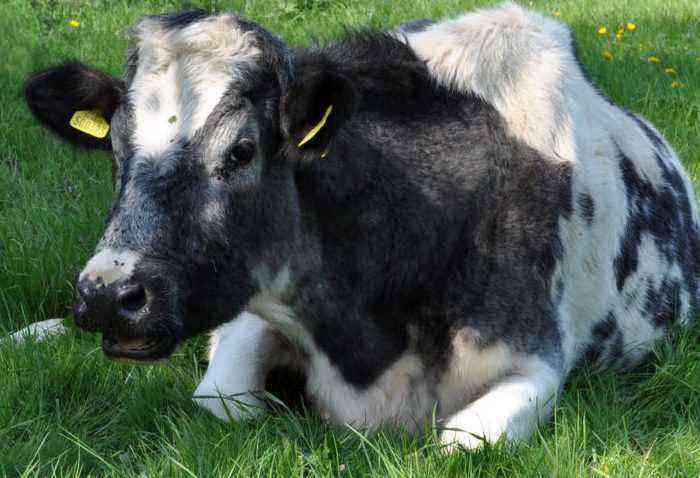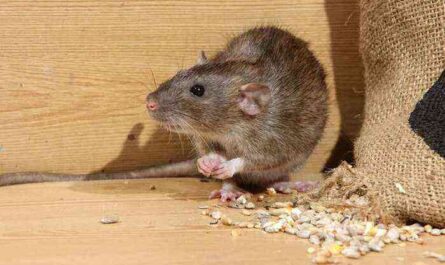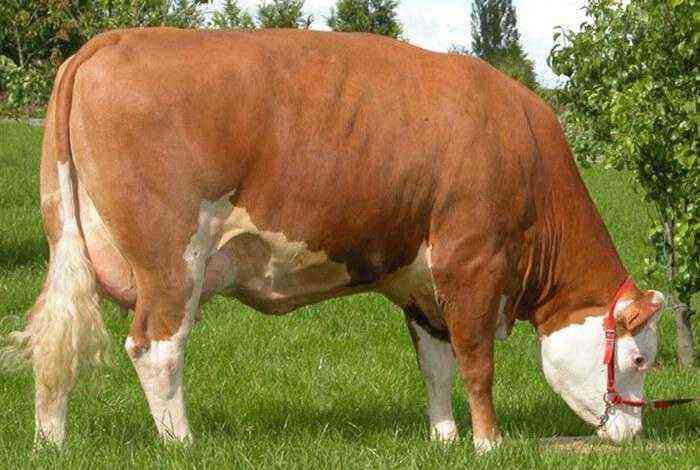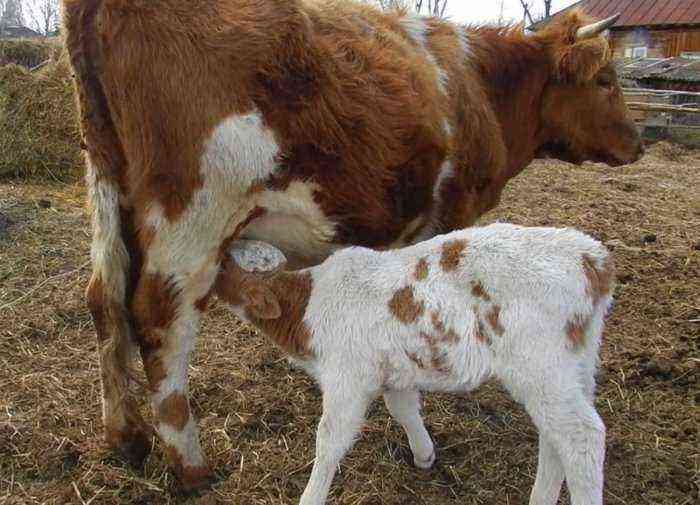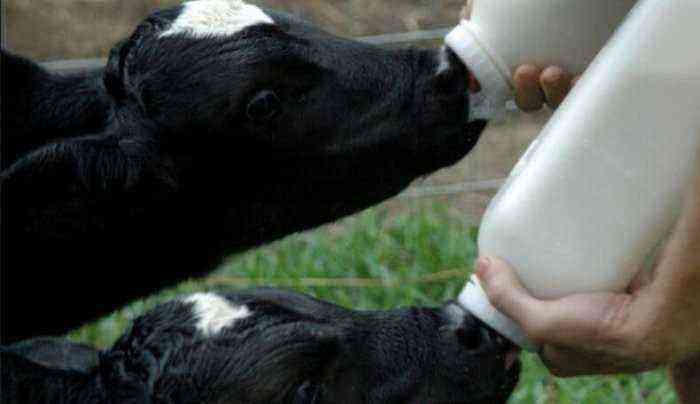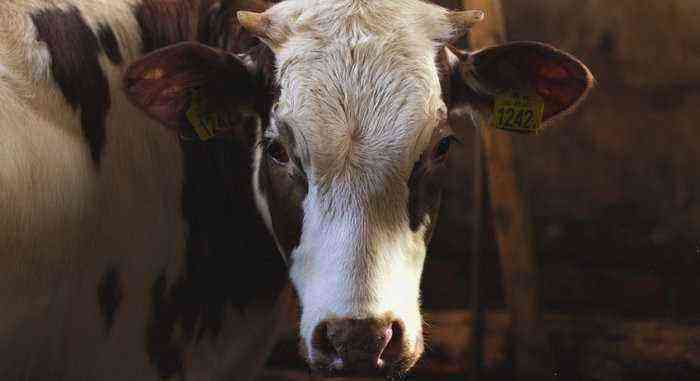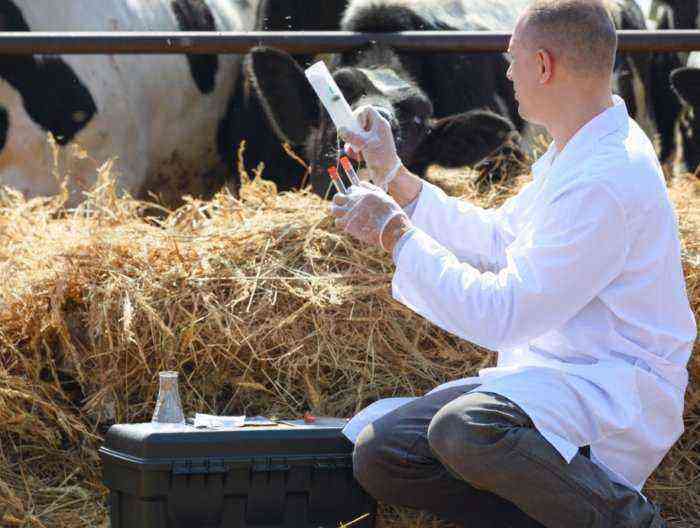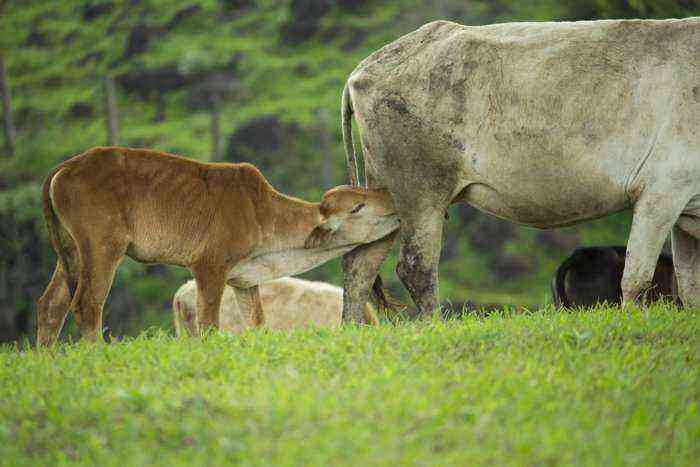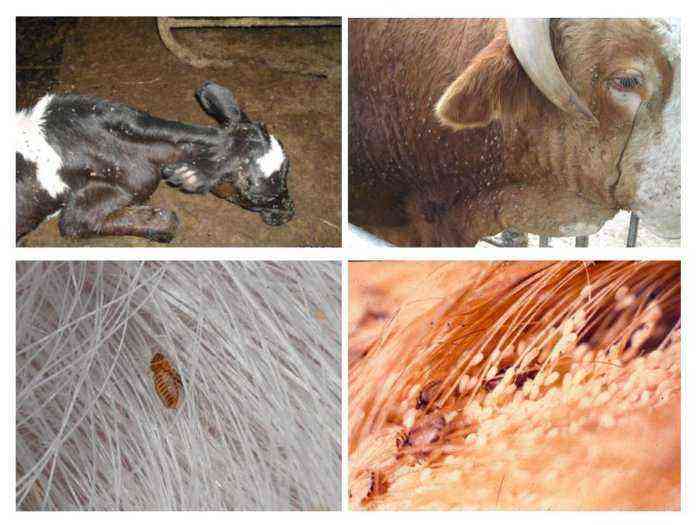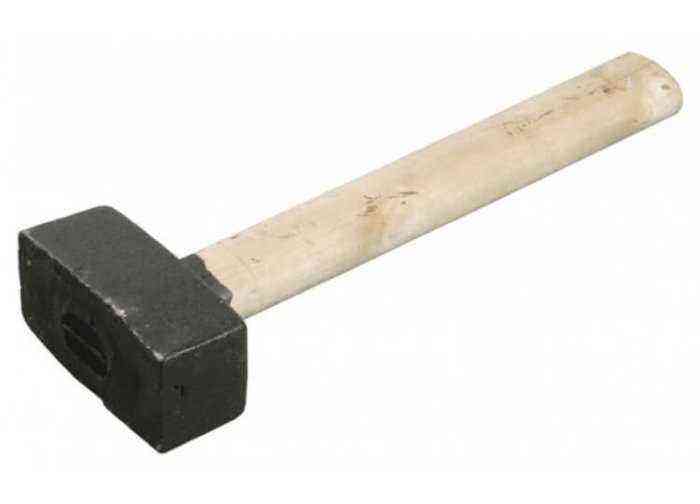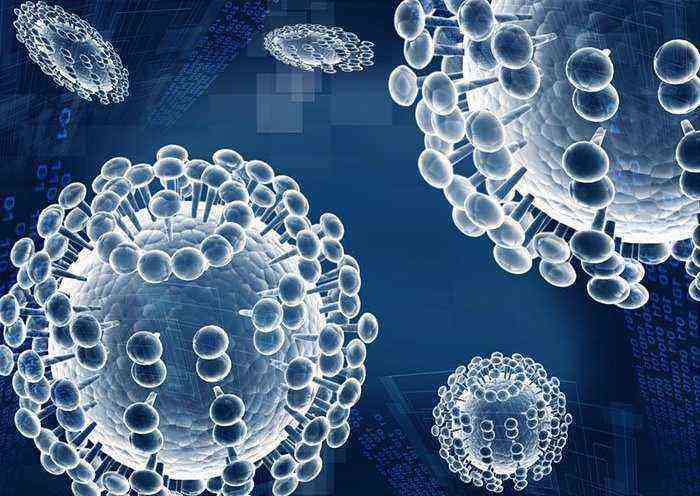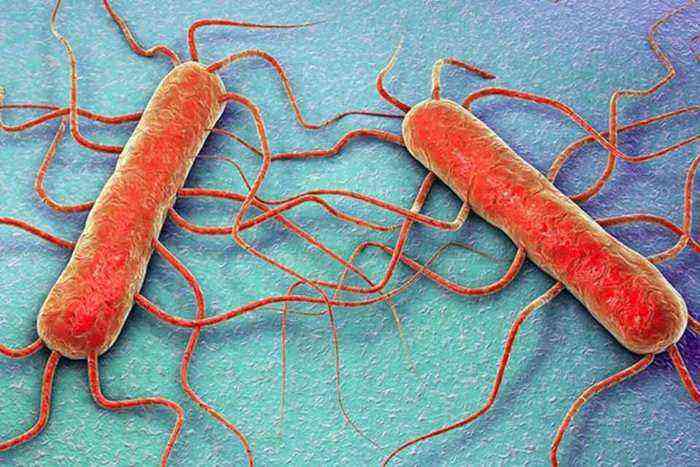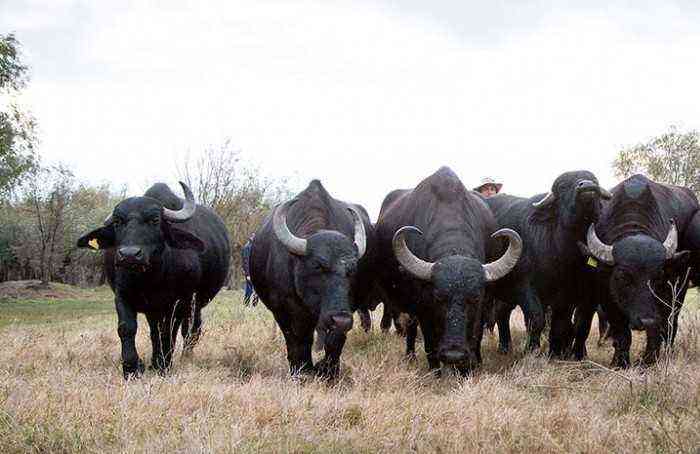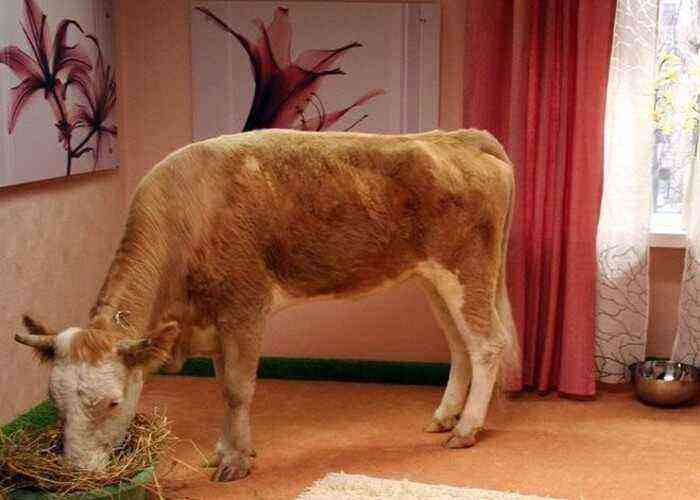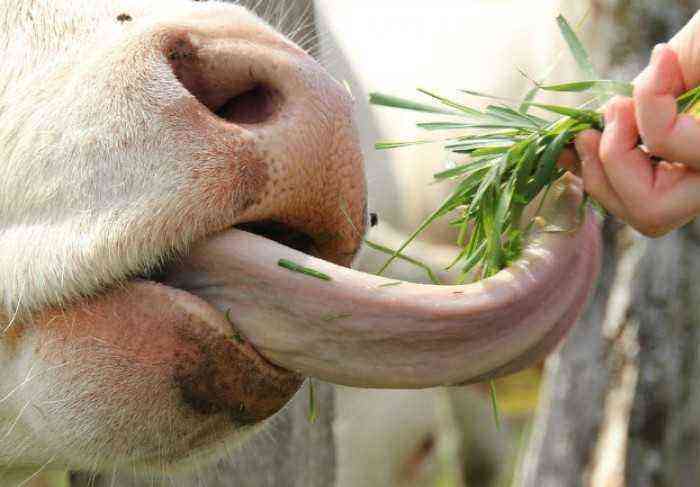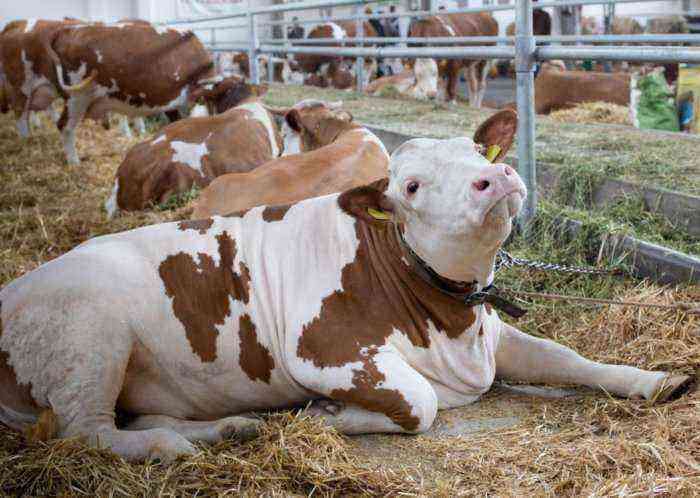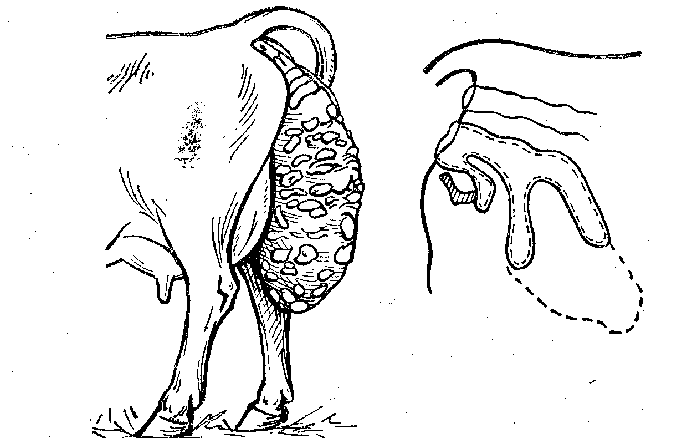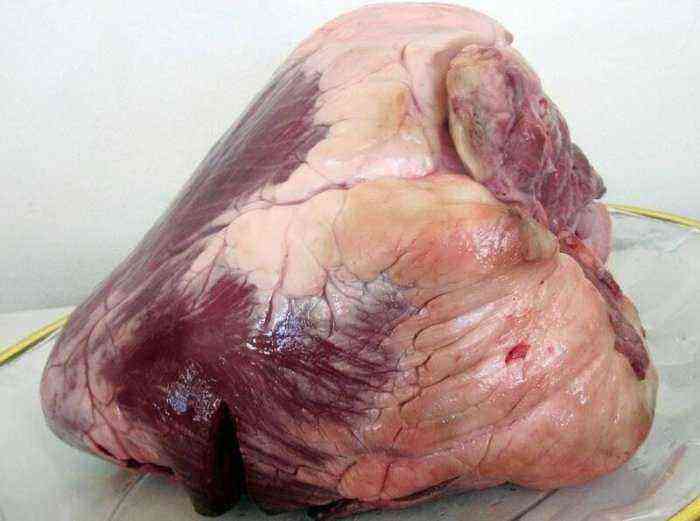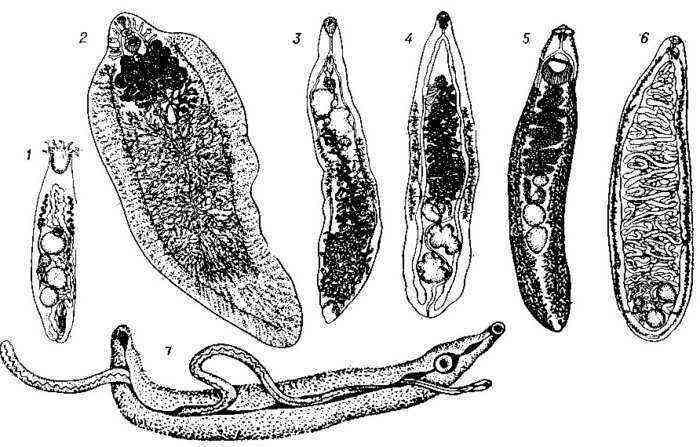Most species of domestic animals are characterized by the instinct of eating the placenta, which comes out of the birth canal after the birth of offspring. If after calving the farmer did not find the placenta, while the animal has signs of gastroenteritis, tympania, diarrhea with dark-colored feces, this allows us to conclude that the cow ate the afterbirth. If this is not dangerous for dogs, cats, rabbits, then in horses and cows, eating the placenta can provoke intestinal disorders and even lead to even more sad consequences.
Cow with calf after calving
Signs of eating the placenta
Normally, the placenta in cows separates and exits the birth canal 4-8 hours after calving.. But if the placenta is not found by the farmer, it can be assumed that he was detained. This is a very serious complication after childbirth. However, this pathology does not always occur. Some cows eat their afterbirth. How to determine that the placenta separated, but was eaten by a cow? Understanding this issue is extremely important, because the further actions of the owner of the animal will depend on the diagnosis.
If more than 8-10 hours have passed after calving, and the afterbirth is not found next to the cow, two scenarios are suggested:
- The placenta didn’t come out.
- Was eaten.
In the first hours after childbirth, it is impossible to know for sure whether the cow has eaten her placenta or whether he continues to be in the birth canal. The veterinarian will help you figure this out. He should be called in as soon as possible to examine the cow. During the examination of the vagina and palpation of the uterus, he will make a conclusion – whether the placenta is found inside. If so, steps will be taken to retrieve it. If there is no afterbirth in the birth canal, then the cow ate it.
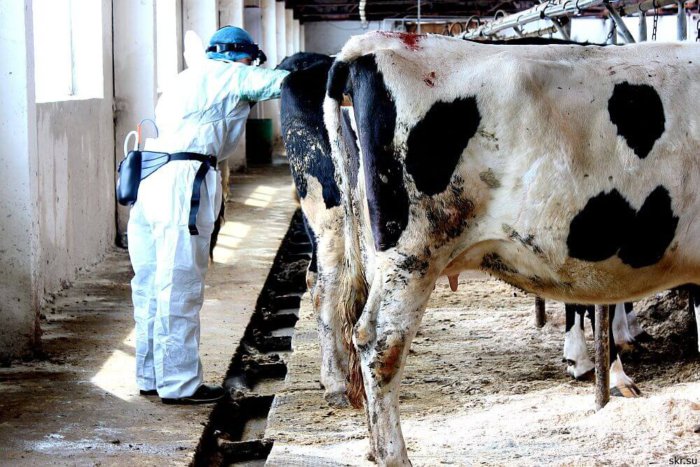
Veterinarian examining a cow
If it is not possible to invite a veterinary service worker in the near future, you should watch the cow. Conclusions can be drawn based on the behavior of the cow. The following signs will indicate the retention of the placenta:
- The cow arches her back.
- Raises the tail.
- Pushing, mumbling.
Attention! When the placenta is inside, the cow tries to push it out. If there are no such symptoms, and the animal behaves adequately, it is likely that it was eaten.
Secondary signs of eating the placenta include:
- Increased gas formation in an animal is tympania.
- Diarrhea.
- Lack of appetite.
- The feces acquire a dark color, fragments of the placenta are found in it.
- Sometimes the body temperature rises.
Reference. If during the first 2-3 days after eating the placenta, the cow does not experience colic and swelling of the scar, there is no reason for concern. Within a week, the placenta will come out with feces.
Aftermath
Eating the placenta in cows can have dangerous consequences. Consider them:
- Acute tympania – the accumulation of gases in the rumen during its blockage can be fatal.
- Sometimes part of the placenta goes beyond the scar and covers the trachea (usually this happens with a deep breath), asphyxia occurs.
- Undigested parts of the placenta can begin to rot inside and cause severe inflammation and intoxication.
Treatment
Treatment is aimed at preventing the development of complications, improving intestinal motility and stimulating the secretion of the cow’s stomach.
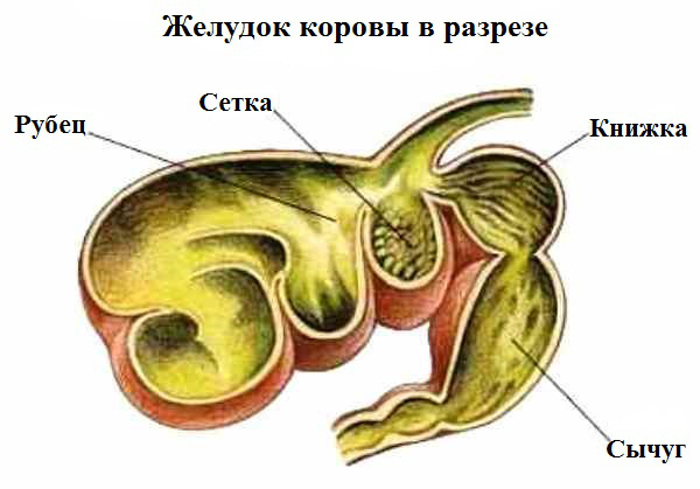
Cross section of a cow’s stomach
In the first 2 days, the cow is kept on a starvation diet with plenty of fluids. In the future, easily digestible food is introduced into the diet. To prevent the development of pathogenic microflora in the rumen and intestines, give inside:
- A solution of potassium permanganate (1 g of crystals per 2 liters of water).
- Ichthyol.
- Phthalazole.
Laxatives (Glauber’s salt) are also used to accelerate the cleansing of the digestive tract from placental tissues. The secretion of the stomach is enhanced by artificial gastric juice. It is made like this – 20 ml of hydrochloric acid and 20 g of pepsin are dissolved in one liter of water. Give the cow to drink twice a day, so that the contents of the rumen are digested faster. Barium chloride helps to strengthen intestinal peristalsis. It is recommended to dissolve 4-5 grams of the substance in a liter of water and water the animal in the morning and evening.
preventive measures
So that the cow does not eat the afterbirth, what should the farmer do:
- It is necessary to wait for his separation after calving.
- Immediately remove from the premises where the animal is kept.
- Bury in the ground.
It is important to observe these preventive measures not only in order to avoid indigestion in the cow, but also to diagnose placental retention in time, because such a complication is also associated with the risk of losing the animal.
